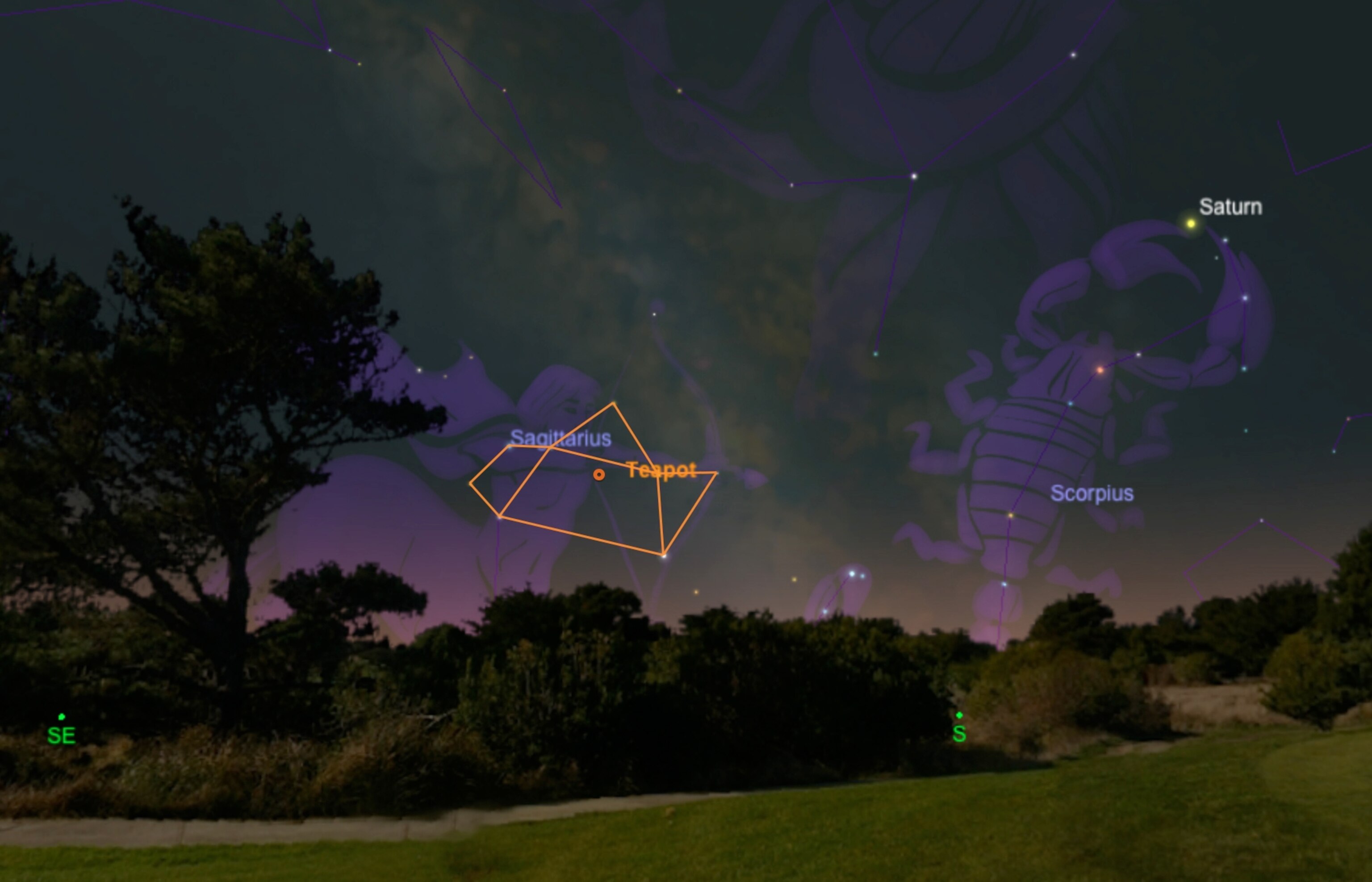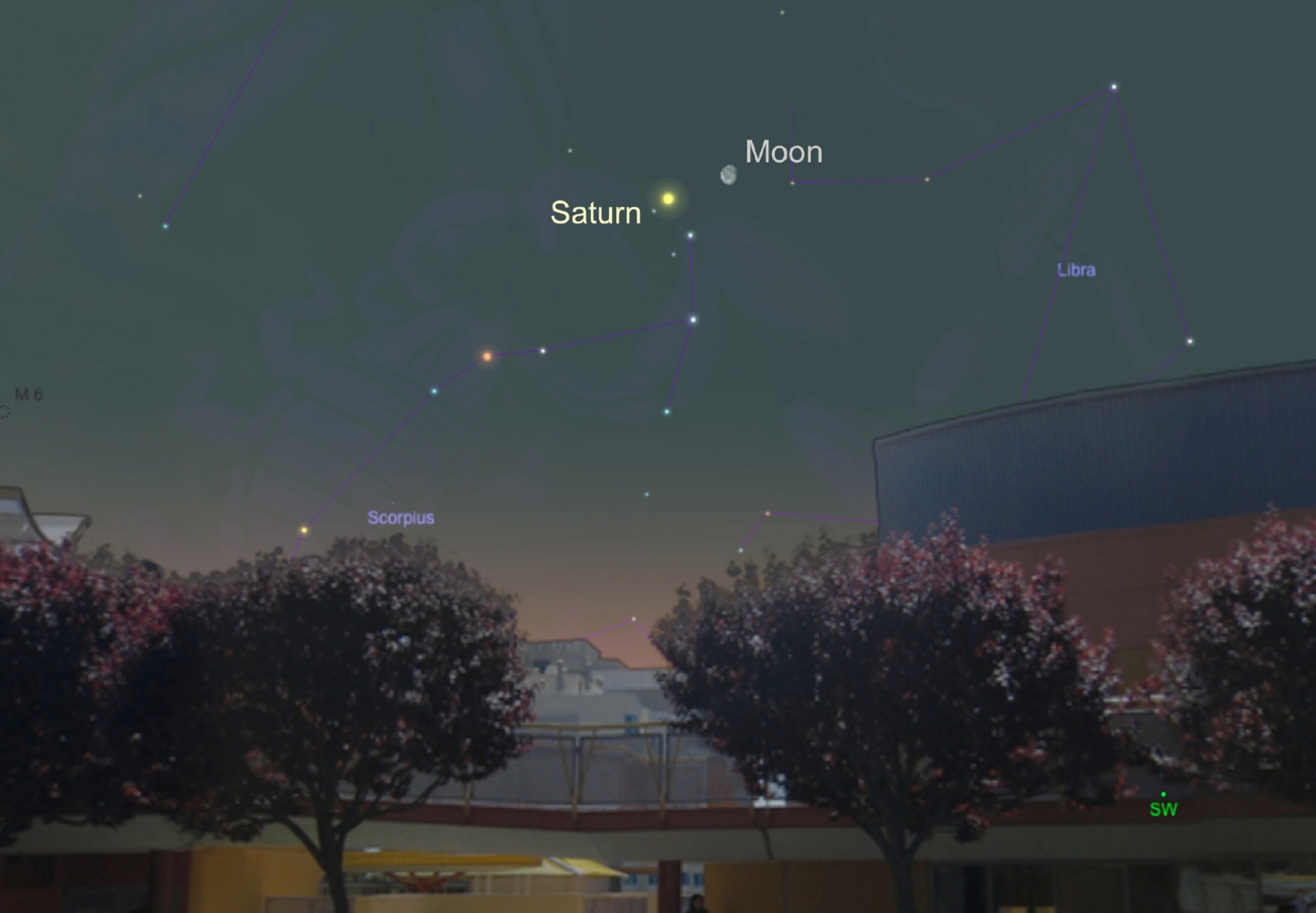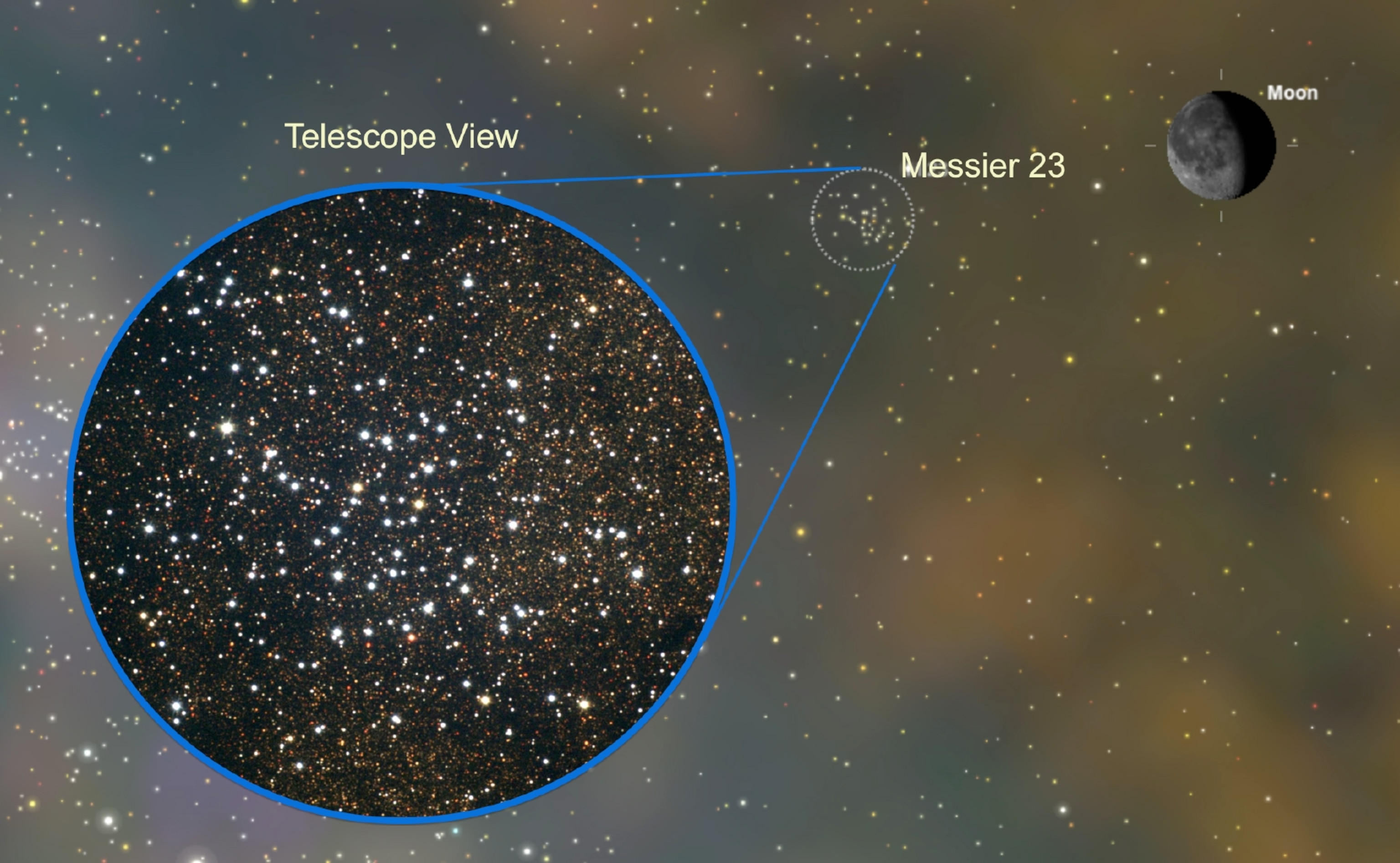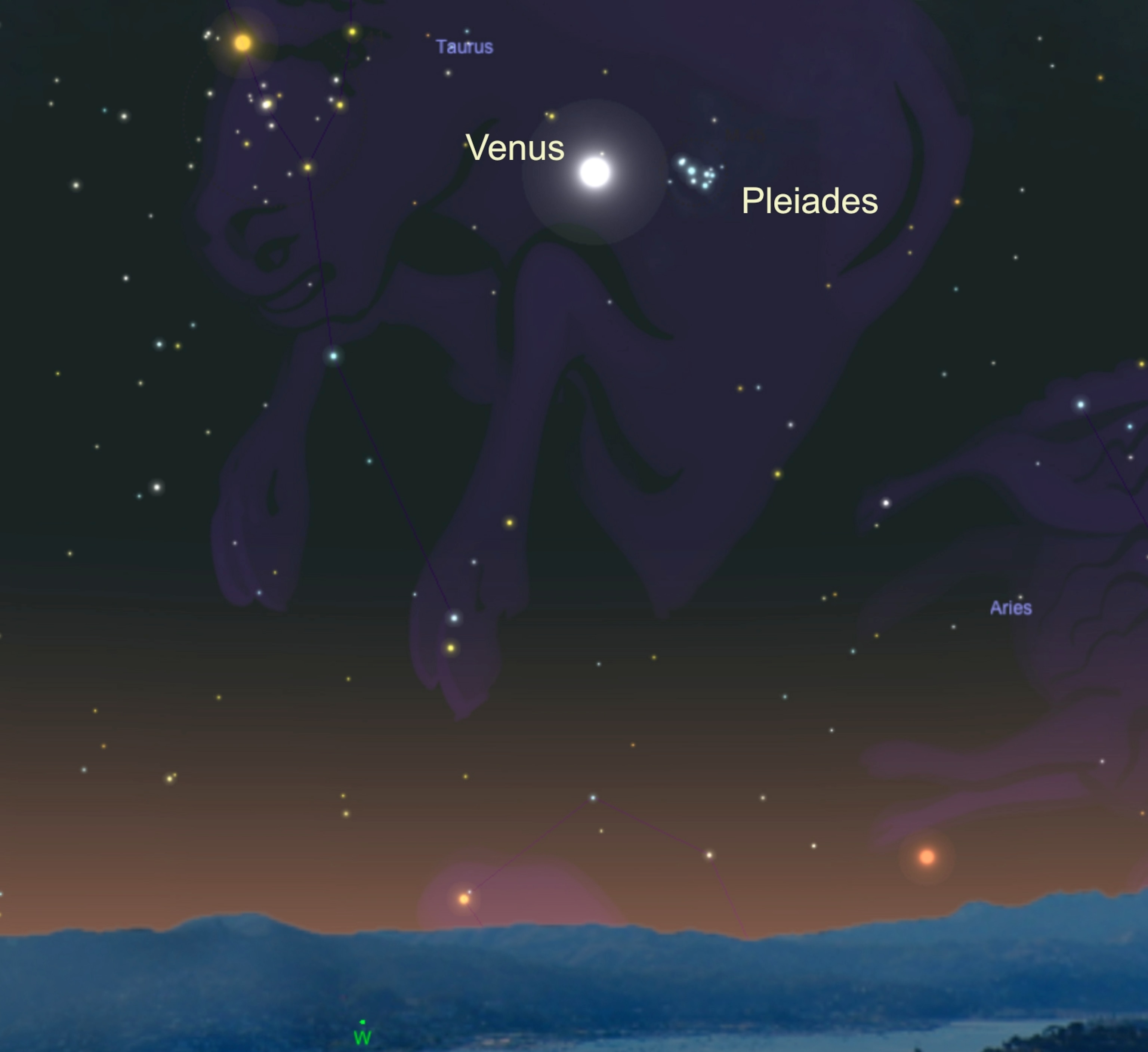
This Week’s Night Sky: Catch an Exploding Star
An exploding star gets brighter, and a planet makes a close pass by the Pleiades star cluster.
Sky-watchers get a chance this week to catch an exploding star that seems to love the limelight, while the Goddess of Love pays a visit to the Seven Sisters.
Nova returns. Backyard astronomers are reporting that an exploding star is quickly coming back to life and brightening again in the southern constellation of Sagittarius the Archer.
First spotted by Australian sky-watcher John Seach on Sunday, March 15, the exploding star shot up in brightness a couple of weeks ago, then faded back down to magnitude 6, just past the limit for viewing by the unaided eye from a dark location. But in the past week and half, new observations show that the star has brightened again to magnitude 4.5—making it just barely visible to the naked eye from city suburbs and an easy target from dark locations.
Discoveries of new nova stars are exciting for astronomers, as stars that are literally blowing their stack!

When we see a nova, we are witnessing the violent explosion of the outer atmosphere of a tiny white dwarf star. White dwarfs are the hot cores of long-dead stars about the size of Earth, and they can gravitationally siphon off gases from a companion star. Over time, this matter accumulates on the white dwarf's surface until it reaches critical temperatures and ignites in a massive thermonuclear explosion that can be seen thousands of light-years away.
To find the new stellar interloper, dubbed PNV J18365700-2855420, start your hunt before local dawn, looking toward the southeast. Look for the distinct asterism, or stellar pattern, of the giant “teapot.” The nova sits just underneath the triangular teapot lid.
It remains a mystery what the nova will do next, so it is definitely worth keeping an eye on in the coming days.
Io shadow. Early evening on Monday, April 6, sky-watchers across eastern North America get a chance to watch Jupiter’s moon Io cast its shadow on neighboring moon Europa.
The shadow of Io, the most volcanic body in the solar system, will darken the ice-cracked surface of Europa by more than half a magnitude, starting at 7:14 p.m. The entire event will last only five minutes but will be easily visible through both binoculars and backyard telescopes.

Saturn and moon. At dawn on Wednesday, April 8, look for the waning gibbous moon passing just north of Saturn. The pair appear only 2 degrees apart—equal to the width of two fingers at outstretched arm’s length.
Even the smallest of scopes trained on the creamy-colored gas giant will reveal its magnificent rings, which are now tilted toward Earth. It’s also a great opportunity to check out some of Saturn’s brightest moons, the largest of which is Titan.
Moon and cluster. Before dawn on Friday, April 10, look for the waning gibbous moon hanging high in the south. Using binoculars or a small scope, look less than 2 degrees to its left and you’ll find the pretty little open cluster dubbed Messier 23.
Nestled within the rich star field of the Milky Way, Messier 23 is a seventh-magnitude cluster that is an easy target for both binoculars and small telescopes.

You’ll find it packed with 150 stars spanning only 30 arc-minutes across—about equal to the width of the full moon in the sky. In reality M23 spans some 20 light-years across and sits 2,100 light-years from Earth.
Seven Sisters meets Venus. As dusk settles in on Saturday, April 11, look toward the low western horizon for Venus, shining bright, to make a very close pass by the Pleiades star cluster. Binoculars will help scan the quickly brightening sky for the tight stellar grouping.
The glare of the sun will make this a challenging but rewarding observation that will test your observing skills.

The 300-light-year-distant group of bright stars will appear only 2.5 degrees to the right of 9.4-light-minute-distant Venus.
Happy hunting!





